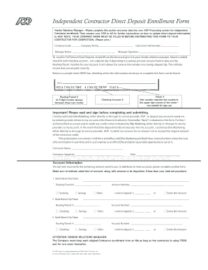
An implicit cost is any cost that has already occurred but not necessarily shown or reported as a separate expense. It represents an opportunity cost that arises when a company uses internal resources toward a project without any quickbooks vs quicken explicit compensation for the utilization of resources. This means when a company allocates its resources, it always forgoes the ability to earn money off the use of the resources elsewhere, so there’s no exchange of cash.
Implicit costs are not direct expenses incurred, but are potential profits/benefits foregone by firms due to conducting business. Explicit costs are also called out-of-pocket costs, accounting costs and outlay costs whereas implicit costs are also known as imputed costs, notional costs, and implied costs. In the fields of accounting, finance and economics, many different approaches are followed to group or categorize business costs. However, on the basis of payments, two major types of costs are explicit costs and implicit costs. In this article, we will clarify the basic difference between these two types of costs and help you identify which type of cost you’re dealing with while operating your business.
There are a few reasons why explicit costs are helpful when estimating a project’s cost. First, they help you to avoid overspending on items that aren’t really necessary for the project. For example, if you’re building a fence, you might not need to spend as much money on materials if you know that the total cost of the project will be $1,000.
Calculate implicit cost
In order to find out what your profit is, you must understand what implicit and explicit costs are and how they differ. You will deal with both types of costs while doing business and must use them to determine accounting and economic profit and opportunity cost, among other things. Whether you realize it or not, you deal with both implicit cost and explicit cost while doing business.

The adjective explicit describes something that has been expressed directly. For example, saying We gave them explicit instructions means that the instructions were stated in detail. Something that’s described as explicit doesn’t leave anything up to interpretation. Harold Averkamp (CPA, MBA) has worked as a university accounting instructor, accountant, and consultant for more than 25 years. He is the sole author of all the materials on AccountingCoach.com.
The difference between implicit and explicit costs
In psychology and the study of memory, the words implicit and explicit are used to describe two different kinds of memory. Explicit memory refers to information that takes effort to remember—the kind we need to think hard about to dig out of our memory bank. Implicit memory, on the other hand, refers to information we can recall very easily or even unconsciously. Adding on to that, both words have multiple meanings—sometimes they’re opposites, and sometimes they simply mean different things. For example, cleaning staff may spend hours cleaning a room but receive no monetary compensation for their efforts.
- Explicit costs—also known as accounting costs—are easy to identify and link to a company’s business activities to which the expenses are attributed.
- For example, when labors and employees are given salary the outlay of cash takes place, and as a replacement of this salary and wages, the employees offer their work and efforts.
- Hence, implicit costs are not reported or accounted for on the financial records of a company.
- The implicit cost is the cost of their time which could have been employed doing their other daily tasks.
Explicit costs are the only costs necessary to calculate a profit because they have a direct impact on the company’s bottom line. You can plug this amount into other formulas, like the accounting or economic profit formulas, to find out financial information for your business. With implicit costs, you do not track them like business expenses in your books. Instead, you can calculate implicit costs to determine economic profit and help make smart business decisions.
Comparing Implicit Costs and Explicit Costs
Explicit costs are the out-of-pocket expenses incurred by a business in the production of goods or services. These costs are easily identifiable and can be directly attributed to a specific activity or business function. By accurately tracking explicit costs, businesses can make informed decisions about pricing, production, and resource allocation. Overall, businesses should carefully monitor their explicit costs to ensure that they are managing their resources effectively and making sound financial decisions. If you’re running a business, one of your primary goals will be to make a profit.
- The value by which is not necessary monetarily quantifiable, but is still considered as a cost.
- Now that we have an idea about the different types of costs, let’s look at cost structures.
- These costs can be particularly significant when making choices that have long-term implications, such as whether to invest in a new product or service.
- It means total revenue minus explicit costs—the difference between dollars brought in and dollars paid out.
- In the most recent year of operation, he is paid a salary of $60,000.
Explicit costs are tracked within the accounting records, because they involve the payment of cash to third parties. Examples of explicit costs are compensation, rent, and utility costs. All of these costs appear in a firm’s income statement as expenses.
Unicameral Legislature Vs Bicameral Legislature: What’s the Difference?
However, if you don’t have an estimate for the cost of materials, you might end up spending $1,200 on materials even though the final cost of the project is only $1,000. The most common way is to use economic theory to estimate how much an action will cost in terms of forgone benefits. Another way is to use information about how people behave in similar situations to estimate how much time, energy, or resources people will use as a result of the decision. In explicit cost outflow of cash takes place, whereas in implicit cost outflow of cash doesn’t take place. Subtracting the explicit costs from the revenue gives you the accounting profit.
How to win by putting people at the centre of your innovation process – Kantar UK Insights
How to win by putting people at the centre of your innovation process.
Posted: Wed, 26 Jul 2023 07:30:00 GMT [source]
In other words, economic profit is the revenue a company generates minus the cost of doing business and any opportunity costs. These costs represent a loss of potential income, but not of profits. Implicit costs are a type of opportunity cost, which is the benefit that a company misses out on by choosing one option or alternative versus another. The implicit cost could be the amount of money a company misses out on for choosing to use its internal resources versus getting paid for allowing a third party to use those resources. For example, a company could earn income from renting out its building versus the revenue earned from using the building for manufacturing and selling its products.
An explicit cost is a cost that is directly incurred by the firm, company or organization during the production period. In this type of cost, the outflow of cash takes place to utilize the factors of production. The record of the explicit cost is noted by the accountant of the company, and can easily be traced as each and every of the expenditure is carefully noted, and is kept as a record. The transfer or outlay of cash takes place through cheques or hand-to-hand, and that too is kept in record. The explicit cost includes rent, salary, wages, stationary, and other expenses which are paid by the company during the process of production. For example, when labors and employees are given salary the outlay of cash takes place, and as a replacement of this salary and wages, the employees offer their work and efforts.

Now that you have some background information on explicit vs. implicit costs, let’s take a look at how to calculate explicit cost and implicit cost for your business. Explicit Costs show that payment has been made to outsiders, while business is carried on. The recognition and reporting of the explicit cost are very easy because they are recorded when they arise. They show that an amount has been spent over a business transaction. Explicit Costs are the costs that you explicitly pay for something- like buying a product, renting an apartment, or filling out a job application. Implicit Costs are the costs that you don’t have to pay for, but that influence your decision – like the cost of time spent commuting or missed wages from not having a job.
It is the value of sacrifice made by the entity at the time of exercising some other action. The cost occurs when an asset is used as a factor of production by the entity instead of renting it out. Explicit Costs are the costs which involve an immediate outlay of cash from the business. The cost is incurred when any production process is going on, or activity is conducted in the normal course of business.
Reforming the Global Financial Architecture to Drive a Resilient Net-Zero Transition – Observer Research Foundation
Reforming the Global Financial Architecture to Drive a Resilient Net-Zero Transition.
Posted: Wed, 05 Jul 2023 07:00:00 GMT [source]
The speaker isn’t outright telling you not to press the button, nor do they say what exactly will happen if you. Rather, they are insinuating—implying, hinting—that something bad will happen if you press the button. In contrast, the adjective implicit describes something that has been implied—meaning it has been suggested or hinted at but not actually directly stated or expressed. For example, saying We had an implicit agreement means that the agreement was implied but never actually stated or written down.